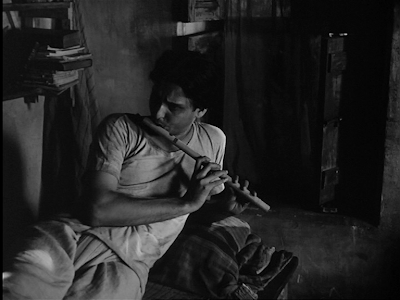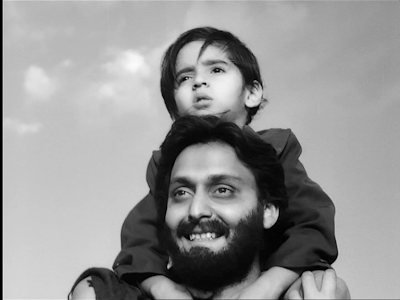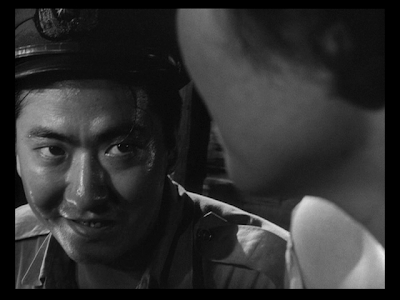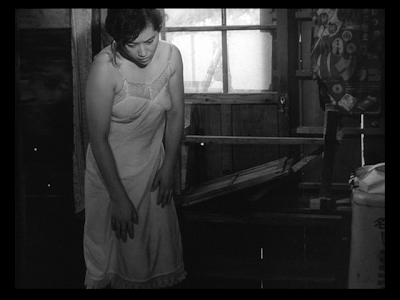
 Apur Sansar
Apur Sansar(The World of Apu)
A film by Satyajit ray
Year : 1959
Bengali with English sub titles
Run time :105 minutes
28th Feb 2010 ; 5.45 pm
Perks Mini Theatre
Perks School , off Trichy Road , Coimbatore
Call : 94430 39630
http://konangalfilmsociety.blogspot.com
'Satyajit Ray on Apur Sansar'
- 7 minutes documentary
will follow the main screening
 The World of Apu (Apur Sansar) concludes one of the greatest film series of all time, Satyajit Ray's Apu Trilogy, which chronicles the life of one Bengali boy as he traverses the road from childhood through adolescence to maturity. Ray, a masterfully accomplished director, is at the height of his powers with this film, one of the most equally wrenching, uplifting, and cathartic motion pictures I have experienced. Following 1955's Pather Panchali and 1956's Aparajito, this 1959 feature provides the perfect culmination to an unforgettable saga.
The World of Apu (Apur Sansar) concludes one of the greatest film series of all time, Satyajit Ray's Apu Trilogy, which chronicles the life of one Bengali boy as he traverses the road from childhood through adolescence to maturity. Ray, a masterfully accomplished director, is at the height of his powers with this film, one of the most equally wrenching, uplifting, and cathartic motion pictures I have experienced. Following 1955's Pather Panchali and 1956's Aparajito, this 1959 feature provides the perfect culmination to an unforgettable saga. The World of Apu is carefully divided into three acts. In the first, we are introduced to the adult Apu (Soumitra Chatterjee), a struggling writer living in a Calcutta apartment during the 1930s. Apu is alone in the world, having already lost his sister (Pather Panchali) and father and mother (Aparajito). He's three months behind in his rent, so, to meet his landlord's demands, he is forced to sell some of his precious books. Jobs are scarce, and Apu can't find one that suits him. One day, his old school friend, Pulu (Swapan Mukherjee), arrives to invite him to a wedding in the village of Khulna. Apu, who doesn't have anything else to do, agrees to come. The trip changes Apu's life.
The World of Apu is carefully divided into three acts. In the first, we are introduced to the adult Apu (Soumitra Chatterjee), a struggling writer living in a Calcutta apartment during the 1930s. Apu is alone in the world, having already lost his sister (Pather Panchali) and father and mother (Aparajito). He's three months behind in his rent, so, to meet his landlord's demands, he is forced to sell some of his precious books. Jobs are scarce, and Apu can't find one that suits him. One day, his old school friend, Pulu (Swapan Mukherjee), arrives to invite him to a wedding in the village of Khulna. Apu, who doesn't have anything else to do, agrees to come. The trip changes Apu's life. The second act, which has an almost-playful tone, details Apu and Aparna's married life -- how they initially come together as strangers then grow to love and understand one another. In slightly more than thirty minutes, Ray brings to life an unforced, deeply moving romance. Apu and Aparna's gentle relationship is punctuated by bursts of pathos and comedy, but their union is so effectively crafted that it's easy for the viewer to lose him- or herself in the simple beauty of Ray's world.
The second act, which has an almost-playful tone, details Apu and Aparna's married life -- how they initially come together as strangers then grow to love and understand one another. In slightly more than thirty minutes, Ray brings to life an unforced, deeply moving romance. Apu and Aparna's gentle relationship is punctuated by bursts of pathos and comedy, but their union is so effectively crafted that it's easy for the viewer to lose him- or herself in the simple beauty of Ray's world.
 The acting, as is usually the case in a Ray film, is of the highest caliber. Soumitra Chatterjee, who was to become a "regular" in the director's films, gives a fine, multi-dimensional portrayal; it's easy to believe that he's the same Apu that we got to know in the other two films. The void created by the absence of Karuna Bannerjee, who anchored both Pather Panchali and Aparjito as Apu's mother, is filled by the exquisite Sharmila Tagore, who, like Chatterjee, would appear in future Ray films .
The acting, as is usually the case in a Ray film, is of the highest caliber. Soumitra Chatterjee, who was to become a "regular" in the director's films, gives a fine, multi-dimensional portrayal; it's easy to believe that he's the same Apu that we got to know in the other two films. The void created by the absence of Karuna Bannerjee, who anchored both Pather Panchali and Aparjito as Apu's mother, is filled by the exquisite Sharmila Tagore, who, like Chatterjee, would appear in future Ray films . The greatness of the "Apu Trilogy" lies not only in its intimate understanding of the intricacies of human nature, but the artistry with which it expresses those truths. Each of the films is filled with wondrous images, and watching Apu's life unfold is like gazing through a window into a rare and unique world. And, even though the trilogy includes much tragedy, Ray gives birth to hope from each despair, and a measure of joy from every sadness. After all, life is like that, and the "Apu Trilogy" reflects the universality of the human experience.
The greatness of the "Apu Trilogy" lies not only in its intimate understanding of the intricacies of human nature, but the artistry with which it expresses those truths. Each of the films is filled with wondrous images, and watching Apu's life unfold is like gazing through a window into a rare and unique world. And, even though the trilogy includes much tragedy, Ray gives birth to hope from each despair, and a measure of joy from every sadness. After all, life is like that, and the "Apu Trilogy" reflects the universality of the human experience.(Source:Internet)


In 1955, after incredible financial hardship (shooting on the film stopped for over a year) his adaptation of Pather Panchali (Song of the Little Road) was completed. Prior to the 1956 Cannes Festival, Indian Cinema was relatively unknown in the West, just as Japanese cinema had been prior to Kurosawa's Rashomon (1950). However, with Pather Panchali, Satyajit Ray suddenly assumed great importance. The film went on to win numerous awards abroad including Best Human Document at Cannes. Pather Panchali's success launched an extraordinary international film career for Ray.
A prolific filmmaker, during his lifetime Ray directed 36 films, comprising of features, documentaries and short stories. These include the renowned Apu trilogy (Pather Panchali, Aparajito [1956] and Apur Sansar [1959]), Jalsaghar (1958), Postmaster (1961), Charulata (1964), Days and Nights in the Forest (1969) and Pikoo (1980) along with a host of his lesser known works which themselves stand up as fine examples of story telling. His films encompass a diversity of moods, techniques, and genres: comedy, satire, fantasy and tragedy. Usually he made films in a realist mode, but he also experimented with surrealism and fantasy.
(From - Senses Of Cinema)







